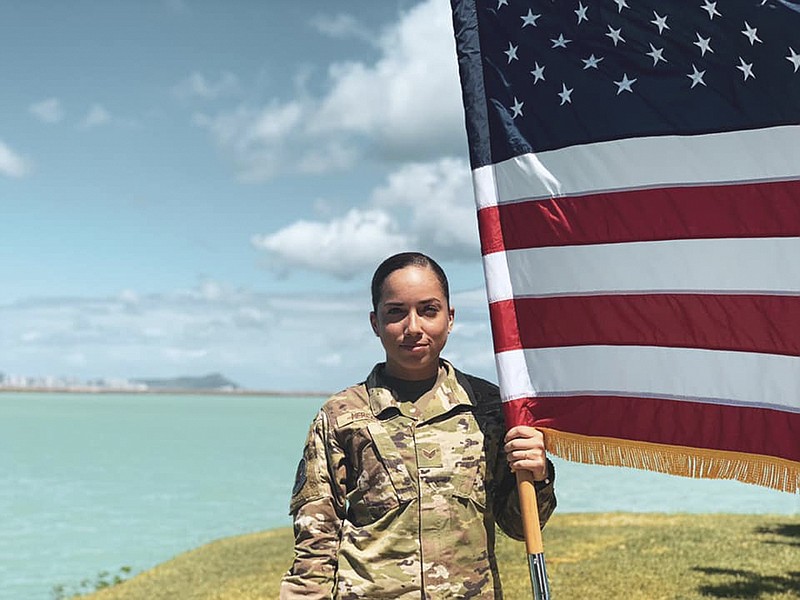ALBUQUERQUE, N.M. (AP) - When Michelle Otero arrived at an art show featuring Mexican-American women, the first thing she did was scan the room. Two exits. One security guard.
Then she thought to herself: If a shooter bursts in, how do my husband and I get out of here alive?
Otero, who is Mexican-American and Albuquerque's poet laureate, had questioned even attending the crowded event at the National Hispanic Cultural Center a day after 22 people were killed in a shooting at a Walmart in El Paso, Texas.
That shooting and an earlier one in Gilroy, California, killed nearly two dozen Latinos. The violence has some Hispanics looking over their shoulders, avoiding speaking Spanish in public and seeking out escape routes amid fears they could be next.
A huge immigration raid of Mississippi poultry plants last week that rounded up 680 mostly Latino workers, leaving behind crying children searching for their detained parents, also has unnerved the Hispanic community.
The events come against the backdrop of racially charged episodes that include then-candidate Donald Trump referring to Mexican immigrants as "rapists"; Trump, as president, referring to migrants coming to the U.S. as "an invasion"; and viral videos of white people chastising Hispanics for speaking Spanish in public.
"It's almost like we're hitting a climax of some kind," said Jennifer Garcia, a 23-year-old University of New Mexico student originally from Mexico. "Some people, especially our elders, don't even want to leave the house or speak Spanish."
From Houston to Los Angeles, Latinos have taken to social media to describe being on edge, worrying even standing in line for a Taco Tuesday special outside a food truck or wearing a Mexican national soccer team jersey might make them a target.
Although the motive in the Gilroy shooting is unknown, authorities said the El Paso shooting suspect, who is white, confessed to targeting people of Mexican descent. The suspect also is believed to have written an anti-Hispanic rant before gunning down mostly Latino Walmart shoppers with an AK-47-style rifle. The attack has rattled a city that has helped shape Mexican-American life in the U.S. for generations.
The manifesto included anti-immigrant and anti-Latino language similar to Trump's.
Garcia said she has seen widespread anxiety among immigrants since Trump was elected in November 2016, and the angst after the shootings "has reached another level."
Alexandro Jose Gradilla, a professor of Chicana and Chicano studies at California State University, Fullerton, said "now anyone can look up a class schedule and start shooting." His wife is also a professor.
"White supremacists don't see the difference between immigrants to fourth-generation Latinos," he said. "They see brown."
Carlos Galindo-Elvira of the Anti-Defamation League in Arizona said, in the days after the El Paso shooting, the organization received calls from concerned Hispanics seeking information about white supremacy and the website where the manifesto was posted.
Some worried whether a mass shooting could happen in Phoenix, a city more than 40 percent Hispanic, Galindo-Elvira said.
"What I tell people is that we cannot live in fear, but we also have to be vigilant and be aware of the rhetoric and our surroundings," he said.
He said information is important, and since last year, the league has been training officials at Mexican consulates across the U.S. about how to report hate crimes against their citizens amid the heightened anti-Latino rhetoric.
Still, Erik Contreras, 36, the grandson of Panamanian and Mexican immigrants, said the recent violence has left him nervously checking parking lots where he worries attackers could hit.
"The other day we went to the Oakland Zoo, and I found myself looking for the way out, just in case," said Contreras, who works at a Union City, California, school and has three children. "I don't want to live like that. This is our country."
Otero, the poet, said she tries to make sense of the attacks by replaying facts in her mind.
"This is someone who drove nine hours to kill people like me," she said of the El Paso shooter, holding back tears. "I don't know what to make of that."
In an effort to help, she is organizing a public reading by poets in Albuquerque to raise money for the families of the El Paso victims.
Flaviano Graciano, of the immigrant advocacy group New Mexico Dream Team, said activists are using the tragedies to organize residents. He said groups are planning forums to help educate Latino immigrants on their rights and how they can protect themselves against violence and anticipated raids.
Sometimes the best way to deal with anti-Hispanic bias is just to stand up to it, said Air Force Senior Airman Xiara Mercado, who grabbed attention on Facebook last month with her story of a woman giving her a hard time for speaking Spanish.
Mercado told the Associated Press as a member of the military she couldn't comment on the recent anti-Latino violence. However, in her case, after suffering past discrimination, "I finally just decided to speak up."

